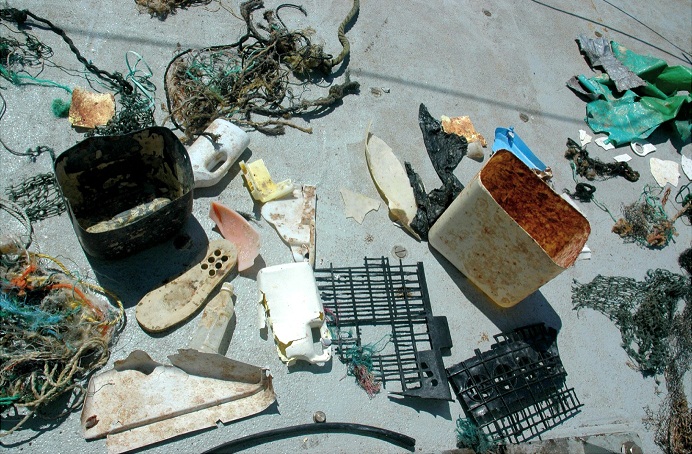
Chapter 30. Chapter 30: Managing Solid Waste
What are some of the environmental consequences of our waste...?

Guiding Question 30.4
What are some of the environmental consequences of our waste production and disposal methods?
Why You Should Care
We create waste from our industries, our agriculture, and our own consumption. Most of these wastes are too heavy to blow, float, or be dragged away. Some wastes are light enough that this can happen, and those wastes end up impacting the environment far away from where they were produced or disposed of.
The most common waste to escape disposal is plastic. It is light, has a low density, and is fairly nondegradable and, therefore, often shows up in distant ecosystems. In the Pacific Ocean, plastic floats on and near the surface of the water. Here, it floats and creates “plastic islands” that attract fish, invertebrates like shellfish, and birds with the promise of food, habitat, and other species. Unfortunately, these plastic patches degrade into smaller pieces that are ingested by the animals, clogging and ultimately poisoning them.
1.
Why do seabirds that live near Pacific plastic patches ingest plastic?
| A. |
| B. |
| C. |
| D. |
2.
What poisons are found in and around Pacific plastic patches?
| A. |
| B. |
| C. |
| D. |
3.
Why did the chicks of Kure atoll ingest the same amount of natural food but more and larger bits of plastic compared to the Oahu chicks?
| A. |
| B. |
| C. |
| D. |
4.
How do small and large pieces of plastic reach these mid-ocean patches?
| A. |
| B. |
| C. |
| D. |
5.
Thought Question: What are the environmental costs of plastic patches?
Activity results are being submitted...